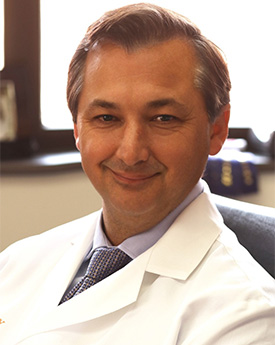Can Transcriptome Technology Help Predict Kidney Transplant Outcomes? See the Study Results
Accurately predicting functional outcomes for kidney transplant (KT) patients is challenging in the best of times.
These are not the best of times.
The ongoing donor organ shortage in the United States has reached the crisis stage and shows no signs of abating. By necessity, marginal donor kidneys are used more often in transplant procedures.
This increases the risk to patients with end-stage renal disease (ESRD) whose very survival and quality of life depend on receiving quality donor kidneys and achieving optimal long-term outcomes.
Today's tools to evaluate donor organ quality — Kidney Donor Profile Index (KDPI) scores and histological evaluations from pre-transplant core biopsies — are simply not up to the task.
Histological evaluations may remain the standard of care in most centers across the United States, but scores obtained at the time of transplant fail to show any correlation with long-term allograft survival. Even when combined with clinical characteristics, histological findings do not facilitate the accurate prediction of post-transplant function.
The good news? Recent innovations in transcriptomic technology improve diagnosis and disease management in other areas of medicine.
Could this same technology satisfy the critical need for objective and accurate molecular tools that predict functional outcomes in KT patients? A recently published study provides early insights.

Daniel G. Maluf, MD
A predictive, prospective study
Daniel G. Maluf, MD, Transplant Surgeon at the University of Maryland Medical Center (UMMC) and Director of the Program in Transplantation at the University of Maryland School of Medicine, was one of the co-investigators, as well as Valeria R. Mas, MS, PhD, FAST, in a prospective, multicenter study designed to develop and validate a multivariable model to predict post-transplant kidney function from baseline clinical characteristics and transcriptomic data obtained pre-transplant.
Study investigators collected pre-transplant biopsies from 270 deceased donor kidneys across four United States transplant centers. Investigators isolated total ribonucleic acid (RNA) and measured gene expression from the biopsies. A training set of patients (n=174) assessed the ability of pre-transplant gene expression profiles to predict 24-month post-transplant outcomes.
Study endpoints included:
- Post-transplant graft function at 24 months, rated as low (Estimated Glomerular Filtration Rate, or eGFR, of <45 mL/min/1.73m2) or high (eGFR ≥45 mL/min/1.73m2)
- Long-term outcomes based on survival rates calculated from 24-months post-transplant to date of graft failure or patient death
Grafts that failed prior to 24 months also rated as low in the study.
Correlating outcomes with pre-transplant gene expression profiles
Results at 24 months in the training set showed:
- 38.5% of patients with low graft function (n=67)
- 61.5% of patients with high graft function (n=107)
Long-term survival outcomes were significantly poorer in patients with low graft function compared to those with high graft function (p=0.03).
In biopsies obtained from pre-transplant donor organs, 595 unique genes were differentially expressed, with a false discovery rate (FDR) of <0.05. In low-function kidneys, 408 genes were upregulated and 187 downregulated.
In low-function grafts, pre-transplantation downregulated biological processes included:
- Metabolism of cholesterol, carbohydrates and carbon
- Recognition of deoxyribonucleic acid (DNA) damage
- Intrinsic apoptotic signaling regulation
- Regulation of cell cycle
This downregulation further exacerbated post-transplant injury in low-functioning grafts.
Additionally, the low-function grafts demonstrated upregulated pre-transplantation immune responses (innate and adaptive), including B cell proliferation, positive regulation of phagocytes and dendric cell migration.
The study investigators applied gene expression data (FDR ≤0.05) to predict graft function at 24 months. They arrived at a 55-gene model with an area under the receiver operating curve (AUROC) of 0.994.
Calculating risk scores
In an independent cohort of KT recipients (n=96; 37.5% with low graft function, 62.5% with high graft function), gene expression was measured for a subset of candidate genes using quantitative polymerase chain reaction (qPCR). A combined model of 13 genes and three donor characteristics showed an AUROC of 0.821. The three donor characteristics were age, race and body mass index (BMI). These were the only donor characteristics that were significantly different in high versus low-function graft groups (p<0.05).
Investigators then calculated a predictive risk score for each patient in the independent validation cohort using the combined model. The study authors believe this risk score can easily be transferred to clinical settings to predict graft function prior to KT.
"Advancing the state of transplantation science is of the utmost importance given the organ shortage crisis," Dr. Maluf said. "This first, genome-wide, large-cohort study created and validated a multivariable model to predict long-term, post-transplant function and demonstrated the potential for early interventions to prevent or slow graft dysfunction progression."
The results from this study provide a foundation for future clinical trials investigating the utility of predictive molecular markers for post-KT outcomes, including those beyond 24 months.
Innovation in action
Dr. Maluf's role as one of the principal investigators in this important study stands as an extension of his institution's commitment to advancing transplantation science into a new age of precision medicine.
UMMC has a robust history of innovation in KT medicine and continues to excel in performing KT procedures. The medical center currently has a five-bar rating (the highest possible) in one-year KT survival outcomes, according to the Scientific Registry of Transplant Recipients.
The center increased its use of biomarkers to assess function and organ quality in KT cases. Additionally, they use transplantation biomarkers clinically for rejection assessment and monitoring.
Because living donor transplants typically lead to the best kidney transplant outcomes, UMMC places a special emphasis on helping patients find living donors. The medical center hosts monthly live webinars and on-demand webcasts aimed at educating patients on how to find living donors who match their needs.
UMMC performs more than 400 transplant surgeries each year. Dr. Maluf, his team and other transplant surgeons throughout the center utilize today's most innovative techniques to achieve surgical excellence for their patients.
To refer a patient for a kidney transplant, please call 410-328-5408.
